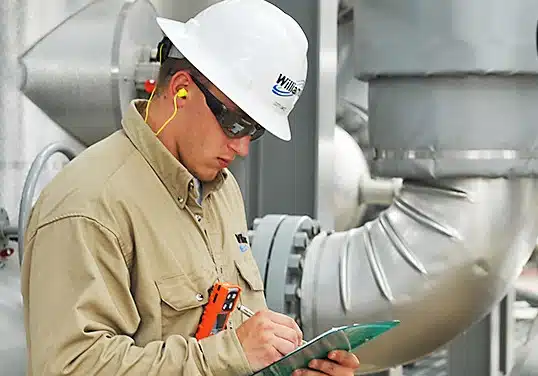Corrosion Under Insulation (CUI) is a significant issue in industries where insulated pipes and equipment are common. It occurs when moisture gets trapped under the insulation, leading to corrosion of the underlying metal. Here’s a detailed look at what CUI is, its causes, effects, and mitigation strategies:
Causes of CUI
- Moisture Intrusion: The primary cause of CUI is the infiltration of water through the insulation. This can happen due to:
- Rainwater
- Leakage from nearby equipment
- Condensation
- Temperature Fluctuations: CUI typically occurs in temperature ranges between -4°F (-20°C) and 300°F (150°C). These fluctuations can cause the insulation material to expand and contract, creating gaps that allow moisture to penetrate.
- Type of Insulation: Some types of insulation are more prone to absorbing and retaining moisture, increasing the risk of CUI.
- Poor Installation and Maintenance: Improperly installed insulation and lack of regular maintenance can exacerbate the problem by allowing water to get trapped more easily.
Effects of CUI
- Structural Integrity: Corrosion can weaken the structural integrity of pipes and equipment, leading to potential failures and leaks.
- Safety Hazards: Compromised structural integrity can pose significant safety risks, including fires, explosions, and toxic leaks.
- Economic Impact: Repairing and replacing corroded components can be costly, and downtime for maintenance can disrupt operations.
- Environmental Concerns: Leaks from corroded equipment can result in environmental contamination, which can lead to regulatory fines and cleanup costs.
Mitigation Strategies
- Proper Insulation Selection: Use insulation materials that are resistant to water absorption and have good thermal properties to prevent condensation.
- Coatings and Linings: Apply protective coatings and linings to the metal surfaces before installing insulation. These coatings can act as a barrier to moisture and corrosion.
- Regular Inspections: Implement regular inspection and maintenance programs to detect early signs of CUI. Nondestructive testing methods, such as ultrasonic testing and radiographic testing, can be used to assess the condition of insulated pipes without removing the insulation.
- Sealing and Maintenance: Ensure that all seams and joints in the insulation are properly sealed to prevent water ingress. Regularly check and maintain these seals to ensure they remain effective.
- Use of Inspection Plugs: Install inspection plugs in the insulation to allow for easy access to inspect the underlying metal without removing large sections of insulation. This facilitates regular monitoring and early detection of corrosion.
Conclusion
Corrosion Under Insulation is a complex issue that requires a proactive approach to manage effectively. By understanding the causes and implementing comprehensive mitigation strategies, industries can significantly reduce the risk of CUI, ensuring the longevity and safety of their equipment.
For more corrosion resources, visit the Association for Materials Protection and Performance
#Corrosion #cui


